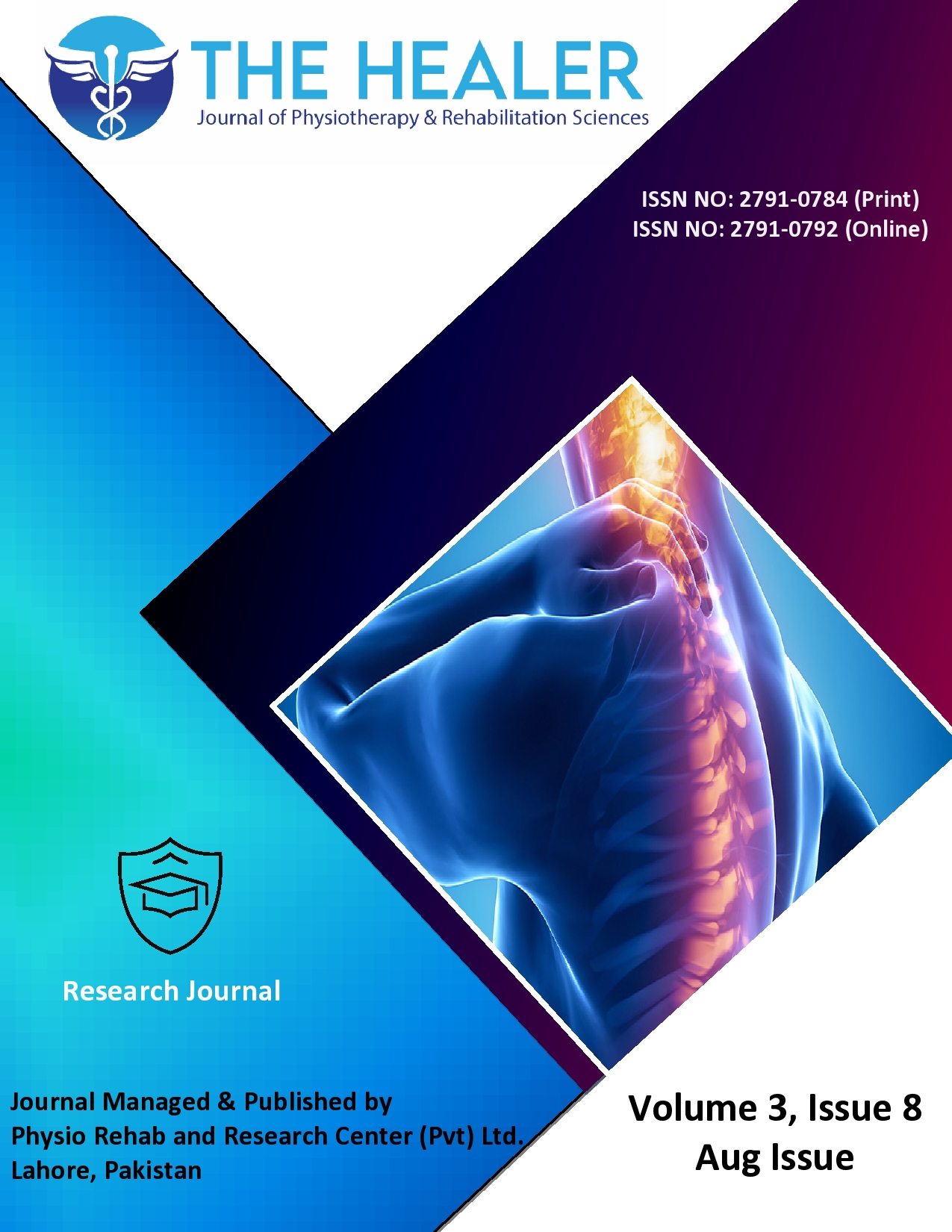Comparitive Effects of Mobilization with Movement versus Stretching on Hip Functionality in Patients with Hamstring Tightness
Mobilization with Movement & Stretching in Hamstring Tightness
DOI:
https://doi.org/10.55735/hjprs.v3i8.189Keywords:
hamstrings, mobilization, range of motion, stretchingAbstract
Background: Hamstring tightness is common in the general population and can compromise quality of life. Stretching and mobilization with movement are two of the most commonly used treatment approaches for addressing hamstring tightness. Objective: To compare the effects of mobilization with movement versus stretching on hip functionality in patients with hamstring tightness. Methods: The study was quasi-experimental in which 56 subjects were assigned randomly into two groups (28 in each group). Both groups were experimental groups, where MWM was given to Group A, and stretching exercise was given to Group B. The numeric pain rating scale, international hip outcome tool and range of motion were used as outcome measure tools for pain, function and range of motion respectively at baseline,4th, 8th and 12th weeks of intervention. The data was analyzed using SPSS 26.0 and the statistical tests were according to data distribution. The test of normality was applied for outcomes at baseline. The p-value was <0.05 for pain and IHOT, non-parametric Friedman ANOVA within group A and Mann-Whitney U test for between-group comparisons of A and B were used. For flexion, data was approximately normally distributed so repeated measured ANOVA was used within the group and an independent sample test was used for between group comparison of A and B. The level of significance was ≤0.05 (CI 95%). Results: A total of 56 patients were enrolled in this study. The Mann-Whitney U test revealed a sum of 249.5 at baseline, 256 after 4 weeks and 186 after 12 weeks of reading in both groups. It shows no significant difference at baseline, 8 and 12 weeks with p-values of 0.14 and 0.13 respectively. However, after 12 weeks significant p-value of 0.000 showed the effectiveness of both but significant differences in groups from baseline to follow-up. Conclusion: The study concluded that both treatments were effective in reducing pain and improving hip functions and range of motion along with hamstring tightness, but mobilization with movement has significant effects on tightness in hamstrings.
Downloads
References
Heshmatipour M, Esfandiari A, Kazemi Naeini M, et al. Effect of Active Dynamic Versus Passive Static Stretching on Hamstring Muscle Tightness in Healthy Female Students: A Randomized Trial Study. Hospital Practices and Research 2019; 4(4): 134-8.
Lee JH, Jang K-M, Kim E, Rhim HC, Kim H-D. Effects of static and dynamic stretching with strengthening exercises in patients with patellofemoral pain who have inflexible hamstrings: a randomized controlled trial. Sports health 2021; 13(1): 49-56.
Ruiz JJB, Perez-Cruzado D, Llanes RP. Immediate effects of lumbar fascia stretching on hamstring flexibility: A randomized clinical trial. Journal of Back and Musculoskeletal Rehabilitation 2023; (Preprint): 1-9.
Hallegraeff J, de Greef M. Pilot testing a stretching regimen for prevention of night time nocturnal leg cramps. Geriatric Nursing 2020; 41(2): 105-9.
Ortiz-Piña M, Molina-Garcia P, Femia P, et al. Effects of tele-rehabilitation compared with home-based in-person rehabilitation for older adult’s function after hip fracture. International journal of environmental research and public health 2021; 18(10): 5493.
Kotteeswaran K, Snigdha J, Alagesan J. Effect of proprioceptive neuromuscular facilitation stretching and dynamic soft tissue mobilization on hamstring flexibility in subjects with low back ache-single blinded randomised controlled study. Int J Pharm Bio Sci 2014; 5: 228-33.
Arslan T, Telci EA, Arslan S. The Effect of Chair-Based Exercises on Exercise Perception and Risk of Falling in Inactive Older Adults Who Live at Nursing Home: A Single-Blind, Controlled Clinical Trial. Topics in Geriatric Rehabilitation 2023; 39(1): 2-11.

Downloads
Published
License
Copyright (c) 2023 The Healer Journal of Physiotherapy and Rehabilitation Sciences

This work is licensed under a Creative Commons Attribution 4.0 International License.














